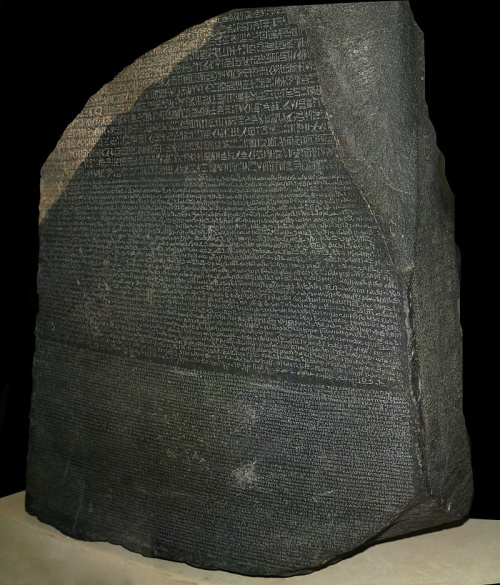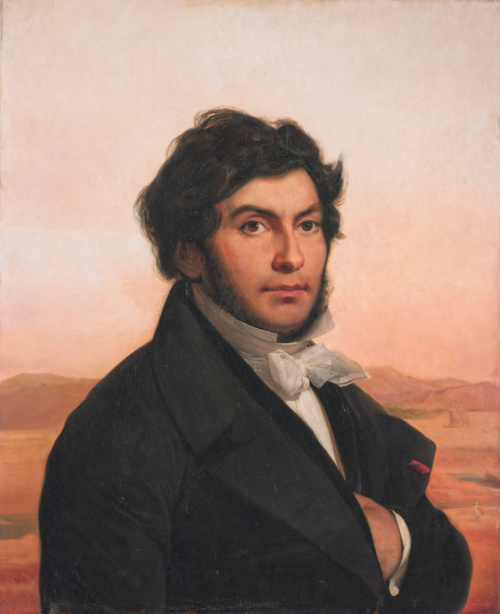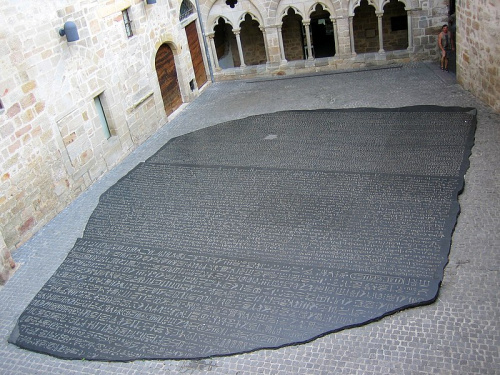Deciphering the Rosetta Stone: Jean-François Champollion
Deciphering the Rosetta Stone: Jean-François Champollion
Deciphering the Rosetta Stone: Jean-François Champollion
-
Hannah
-
Hannah

The ancient Egyptians communicated in writing using hieroglyphs, stylized pictures of objects that represented words, syllables or sounds. When the last of the pagan temples were closed in the 5th century AD (most notably Philae), the knowledge of how to interpret hieroglyphs was lost. Scholars in the centuries that followed tried hard to decipher hieroglyphs from Egypt, but to no avail.
Then along came Napoleon and his campaign of 1798–1801 in Egypt and Syria, a mission to ‘defend French trade interests and establish scientific enterprise in the region’. On 15 July 1799, French soldiers working at Fort Julien, near the port city of Rosetta (modern-day Rashid), uncovered a stone. Lieutenant Pierre-François Bouchard realised at once that it was of interest given its inscriptions: in the hieroglyphic and Demotic scripts of ancient Egypt and in ancient Greek.
In 1801, the British defeated the French and took the stone back to London, where it was displayed in the British Museum, much to the wonder of the many visitors who came to see it.
We now know that the stone was a stele carved during the Hellenistic period and was likely displayed in a temple originally. The wording is a decree that was issued in Memphis, Egypt, in 196 BC establishing the divine cult of the new king, Ptolemy V Epiphanes.

The Rosetta Stone (source)
What made the Rosetta Stone so important was the realisation in 1799 that the wording on the stone was the same decree inscribed in three languages, making the stone a key for at last deciphering Egyptian scripts.
The ancient Greek was translated in 1803, and plenty of scholars tried to crack the code of the ancient Egyptian scripts. But it was Jean-François Champollion who became ‘the decipherer of Egyptian hieroglyphs’ and thus ‘the Father of Egyptology’.

Jean-François Champollion (source)
Champollion (1790–1832) was a keen mind who spoke Coptic and Arabic as well as his native French and had at the age of 16 presented his first paper on how to decipher Demotic. Swept up in the ‘Egyptomania’ awakened by Napoleon’s time in Egypt, he was fascinated by the Rosetta Stone and made it his mission to decipher the hieroglyphs.
This he did, with help from Thomas Young, foreign secretary of the Royal Society of London. It was on 14 September 1822 that Champollion had his eureka moment. Apparently, he raced off to his brother’s house, burst into his office, declared ‘Je tiens l’affaire!’ (‘I’ve got it!’) and fainted dead away.
Once he recovered, Champollion wasted no time in sharing his breakthrough. On 27 September he gave a lecture at the French learned society Académie des Inscriptions et Belles-Lettres, outlining his discoveries, and wrote the now-famous Lettre à M. Dacier relative à l’alphabet des hiéroglyphes phonétiques (Letter to M. Dacier concerning the alphabet of the phonetic hieroglyphs), which would be published the following month in a 44-page booklet and form the basis for the decipherment of Ancient Egyptian hieroglyphs henceforth.

Hieroglyphic phonetic characters with their demotic and Coptic equivalents, Lettre à M. Dacier (source)
If you are ever in the Lot department of southwest France, you can visit the commune of Figeac, birthplace of Champollion. There, you’ll find a museum devoted to his work and the history of writing, and a monumental reproduction of the stone.

Place des ecritures, Figeac (source)
The Rosetta Stone itself is still on display in the British Museum, where it remains the most popular exhibit.